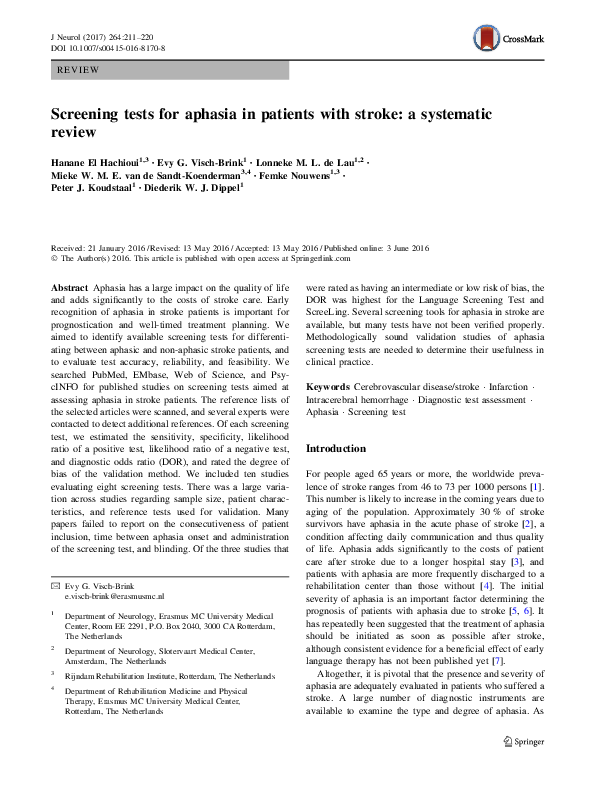The Evidence Based Language Test (EBLT)


The Brisbane Evidence Based Language Test (EBLT) is a free comprehensive language assessment designed to aid in diagnosing aphasia. Easy and time efficient administration make this assessment ideal, including 49 Receptive and Expressive Subtests that measure various language impairments; there are even short versions and adapted scores available when time or co-morbidities limit its administration time.
Table of Contents
Developed in Australia
The Brisbane Evidence Based Language Test was created to assess patients’ communication abilities using real-world objects. It evaluates 49 language domains and uses a severity scale to calculate each patient’s score. Studies have proven its efficacy for acute post-stroke clinical practice as it’s easy and accurate diagnosis.
Speech pathologists’ clinical knowledge and experience were integral in creating the Brisbane EBLT. Its item bank consisted of existing informal language measures as well as newly designed tasks and questions collected via an online request to clinicians; these new items were meant to maximize assessment responsiveness while considering any co-occurring conditions (e.g. hemiparesis, hemicrania, apraxia of speech or hearing impairment).
Psychometric validation has been achieved for the Brisbane EBLT via a multi-center cross-sectional study. Diagnostic validity was then evaluated against a gold-standard language battery and found to be both sensitive and specific, as well as mitigating co-occurring conditions such as upper limb weakness or visual acuity that might impede performance on test day.
It is free
Aphasia can be debilitating, making accurate identification essential in healthcare. Unfortunately, due to time and patient comorbidities, successful assessment in clinical practice often proves challenging. The Brisbane Evidence Based Language Test (EBLT) was created to address these challenges with its free speech-language pathology resource being rigorously tested and validated across numerous studies as a reliable way of detecting aphasia after stroke patients.
The EBLT comprises five test versions that adapt to individual patient needs, clinical contexts and co-occurring conditions. Each version consists of 49 subtests that assess auditory comprehension, verbal expression and actions/gesture evaluation, reading and writing proficiency as well as diagnostic analysis that allows clinicians to quickly diagnose whether an individual is experiencing aphasia at their hospital bedside in 15-25 min. In addition, Short Tests offer quick guidance specifically designed for treating aphasia.
It is highly accurate
The Brisbane Evidence-Based Language Test (EBLT) is a free comprehensive language assessment tool intended to detect aphasia. Comprised of 49 subtests that assess real world objects and uses, this assessment tool has been clinically validated through multiple studies; providing clinicians with accurate identification of patients suffering from aphasia.
As part of its development process, the EBLT was subjected to rigorous tests to ensure it is culturally sensitive by seeking feedback from both English speaking patients and SLTs regarding cultural appropriateness of individual subtests (Rohde et al. 2020a). Furthermore, four short tests designed to be administered within 15-25 min were also created as adaptations to fit diverse patient needs and clinical contexts.
Recently, a multicentre cross-section survey of SLTs was conducted to understand their current use and perceptions of the Brisbane EBLT. Results suggested that SLTs desired comprehensive, efficient, evidence-based language assessments that can be addressed by altering its layout to add severity ratings and enhance responsiveness of assessment responses.
It is easy to administer
The Brisbane Evidence Based Language Test (EBLT) is an easy and sensitive evaluation of aphasia. Comprised of 49 subtests designed to measure various aspects of language use – verbal expression, repetition, automatic speech (picture description), spontaneous speech, naming auditory comprehension and actions/gestures – its psychometric properties have been thoroughly assessed in a multicentre cross-sectional study; its interrater reliability, intrarater reliability and internal consistency all rank highly.
The EBLT has shown impressive diagnostic accuracy in the literature surrounding aphasia, with excellent estimates for both its sensitivity and specificity. Furthermore, its discriminant capability allows clinicians to distinguish between impaired and non-impaired verbal fluency performance – this feature of assessment may prove particularly helpful to those having trouble interpreting verbal fluency scores.
Further research should explore S-LPs’ current language assessment practices and perspectives, as well as the impact of the Brisbane EBLT in real world clinical practice. This may involve testing it in additional languages as well as investigating short and full test versions as well as setting appropriate cutoff score values for aphasia diagnoses.


